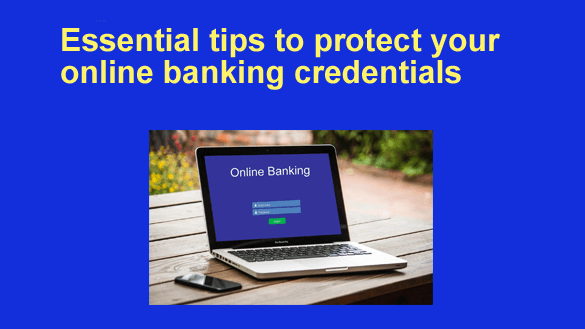 Online banking has become an essential feature of the modern world. No longer do we have to visit brick-and-mortar banks to check our account balance or make a transfer. Sadly, these benefits come with certain downsides. Cyber threats are some of them.
Online banking has become an essential feature of the modern world. No longer do we have to visit brick-and-mortar banks to check our account balance or make a transfer. Sadly, these benefits come with certain downsides. Cyber threats are some of them.
So, what are the main cyberattacks we should be aware of? How can we protect sensitive financial information online? Read on to find out.
Cyber Threats in Online Banking
Phishing. As one of the most popular cyberattacks, phishing is used to trick online users into thinking that they’ve received a legitimate email or message. As a result, they end up sharing their online credentials. How do they do it? A cybercriminal would usually send a link or attachment that would either replicate the legitimate log-in screen or infect the PC with malware. Lately, these scam messages have become more advanced, perfectly replicating authentic conversation.
Ransomware
Another approach that criminals take when trying to steal financial data is spreading ransomware. During this attack, a computer will be infected and locked by the criminal. They unlock it only after the victim pays the attacker. Unfortunately, if the ransom is not paid right away, the criminal will opt to post the stolen data to criminal websites or blacklist the PC owner. Sadly, this approach is effective against both casual users and financial institutions.
DDoS Attacks
Distributed Denial-of-Service, or DDoS attacks, are incredibly common in the financial world. The cybercriminal initiates countless connection requests to the system, thus taking it out. Because of that, the whole institution can appear offline. During the offline period, the attackers could dive deeper into the system and steal essential banking data.
Supply Chain Attacks
In this situation, the third-party vendor of the financial services is the target. Unfortunately, vendors don’t care about their cybersecurity. So, they become the weak spot. Cybercriminals can use one third-party vendor to access sensitive information stored for several financial institutions.
How Do I Protect Myself?
Threats are surely daunting. Yet, you or your organization is not entirely defenseless. There are certain precautions both individuals and organizations can take to protect themselves from cyber attacks.
Enable Two-Factor Authentication
Whenever you log into your account, use two-factor authentication. This technology serves as an additional layer of protection between you and cybercriminals around you. When you are logging into your account, 2FA will prompt you to take one more action to verify your identity, like requesting you to enter a code that arrives in your email or phone.
Considering that the hacker doesn’t have access to your authentication medium, they won’t be able to bypass 2FA.
Use a Password Manager
If your password is good enough, that alone can protect your financial data. Whether you’re a casual bank customer or work in a financial institution, you should be careful about what you put as your password. Enterprise-level password managers are ideal vaults for security of your credentials. This software will not only create a long, complicated password for your account but will also note it down and input it for you. With a password manager, you’ll store all your passwords in a secure place and will only need one code to access them all.
Connect to Public Wi-Fi Safely
Who doesn’t use public Wi-Fi? It’s an incredible opportunity to connect with your family and friends when you’re at work, in a hotel, or in a restaurant. Yet, it can pose several security threats. Avoid using online banking services when you’re connected to public Wi-Fi. If you end up using public networks:
- Turn off public file sharing
- Use secure websites
- Invest in a reliable VPN. When using online banking services, it’s crucial to invest in the best VPN to ensure your connection is secure, especially when accessing sensitive information on public networks.
Monitor Financial Activity
Fortunately, online banking services send alerts to our phones when something seems suspicious. Some banks block big transactions or require your approval before they go through. Don’t forget to turn on all notifications in your online banking application and monitor financial activity frequently. Contact your financial service provider if you ever suspect fraud.
Check Suspicious Messages for Authenticity
Since phishing is so frequent among cybercriminals, especially in the financial niche, you should always inspect messages and emails sent by financial institutions. Don’t click on suspicious links without proof from your bank. Don’t share your login credentials —your bank will never ask for your login name or password. Avoid posting a lot of personal information on social media networks as it can be used against you by cybercriminals. Always verify the sender’s identity before replying to them.
Your Safety Is Your Priority
Cyber threats are always evolving in the modern world. So, no matter if you’re a casual online banking user or a financial institution employee, you should always take extra precautions when dealing with sensitive data.
Now, you know what cyberattacks are the most common. Don’t hesitate to protect yourself by enabling 2FA, utilizing a password manager, and monitoring your financial activity. Check suspicious messages before replying, and contact your bank if you ever feel like you’re under attack.